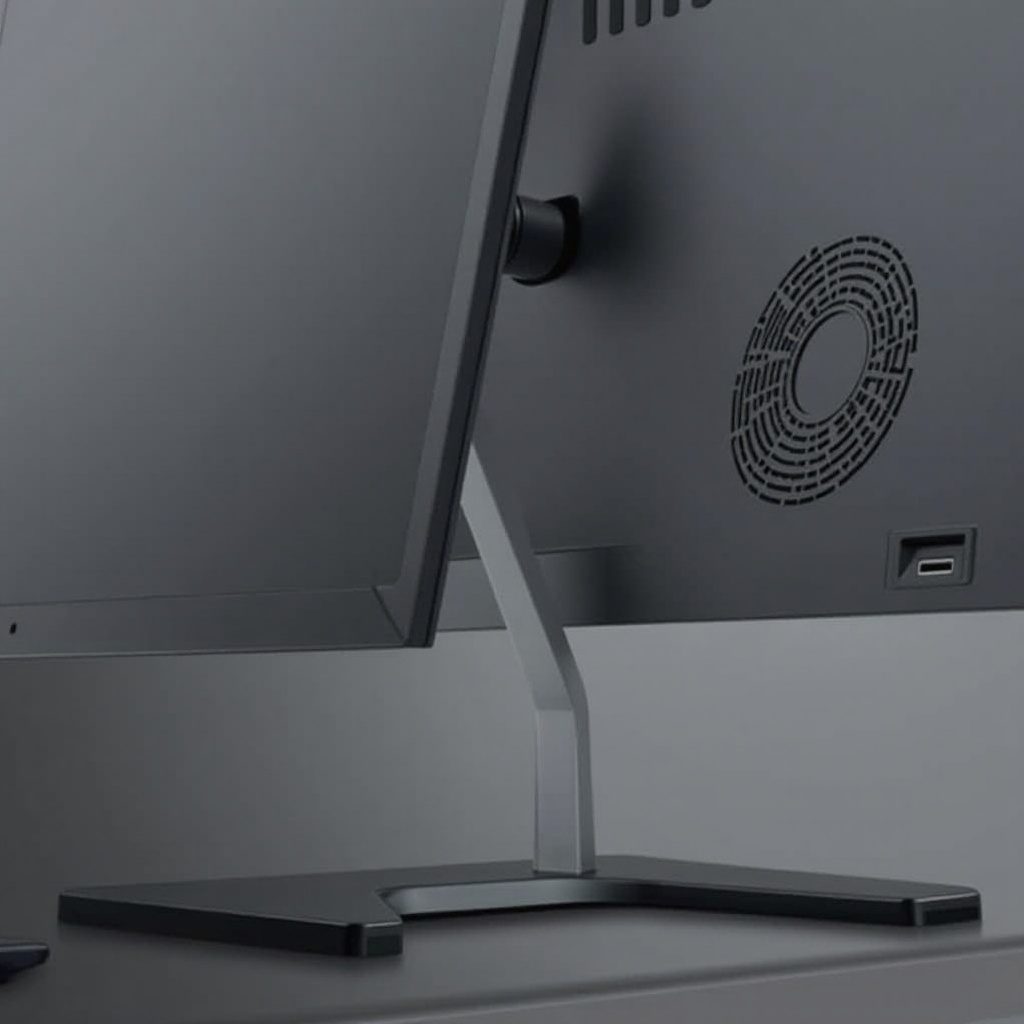Introduction
When setting up a streamlined and efficient workspace, one crucial factor is determining your monitor’s audio capabilities. Monitors with built-in speakers can eliminate the need for extra devices, simplifying your overall setup. But how do you know if your monitor has these built-in audio features? In this guide, we’ll explore how to identify if your monitor has speakers, discuss the advantages and disadvantages, and suggest alternatives if your monitor lacks this feature.

Identifying Built-In Speakers in Monitors
If you’re wondering whether your monitor includes built-in speakers, there are a few methods you can use to find out.
Physical Examination of Your Monitor
Start by examining your monitor physically. Typically, speaker grilles are found on the bottom or back of the monitor, although some sleek designs may conceal them well. Spotting small holes or a perforated design can indicate the presence of speakers.
Checking Manufacturer Specifications
If a simple physical inspection doesn’t provide clarity, it’s best to turn to the manufacturer’s specifications. These details are generally found on the product’s website or in the user manual, where they will explicitly state if speakers are included.
Utilizing the On-Screen Display (OSD) Menu
Monitors equipped with speakers often have audio control options accessible through the On-Screen Display menu. By pressing the menu button on your monitor, you can navigate through the interface to check for audio controls, confirming speaker functionality.
Understanding the Pros and Cons of Monitors with Speakers
Determining the presence of speakers is one aspect; understanding their benefits and limitations is another layer of consideration.
Benefits of Built-In Audio
- Space Saving: By negating the need for external speakers, built-in speakers can save valuable desk space.
- Convenience: Reduces the clutter of cables, making the setup process easier.
- Aesthetic Integration: Maintains the monitor’s sleek design without additional equipment.
Limitations of Monitor Speakers
- Audio Quality: Built-in speakers often lack the sound quality of dedicated external sound systems.
- Volume and Bass Capabilities: These speakers might not provide the volume or bass level desired for multimedia experiences.
Ideal Users for Monitors with Speakers
For users who value minimalism and have basic audio needs, such as video conferencing, monitors with built-in audio are ideal. Meanwhile, audiophiles or gamers might prefer the superior sound offered by dedicated speakers.

Ensuring Your Monitor’s Audio Functionality
Once you discover that your monitor has built-in speakers, the next step is to verify their proper functionality.
Verifying Audio Connections
- Cable Check: Ensure your monitor is connected to your computer via an HDMI or DisplayPort cable, as these transmit audio.
- Port and Connection Inspection: Verify the use of correct ports and check for any loose connections.
Testing Sound Output
- Volume Control Check: Adjust the main volume on your computer and the monitor’s volume through its OSD menu.
- Playback Test: Play a sound file or video to evaluate if the monitor’s audio is functioning as expected.
Troubleshooting Common Issues
- Driver and Firmware Updates: Regularly update both your computer’s audio drivers and the monitor’s firmware.
- Audio Output Settings: Make sure the system’s audio output is set to your monitor.
- Device Reboot: Restarting your computer or monitor can sometimes resolve minor issues.

Exploring Alternatives When Built-In Speakers Are Absent
Even if your monitor doesn’t have speakers, you don’t have to miss out on a comprehensive audio experience. Here are some viable alternative solutions.
External Speaker Systems
Investing in external solutions like soundbars or desktop speakers can significantly enhance sound quality and volume.
Optimal Audio Setups
- Soundbars: Positioned under monitors, soundbars deliver powerful sound while reducing additional clutter.
- Headphones: An excellent choice for personal audio listening, especially in open or shared spaces.
Cost-Effective Solutions
- Portable Bluetooth Speakers: These provide good audio quality at a reasonable price point without requiring complex setups.
- USB-Powered Speakers: Compact and effective, these speakers offer significant audio improvements with the ease of USB connection.
Conclusion
In determining if your monitor has built-in speakers, a comprehensive check of physical features and technical specifications can provide answers. By understanding the pros and cons of integrated speakers, you can tailor a setup that meets your needs, whether by utilizing these features or seeking alternatives. The decision should ultimately align with both your audio expectations and the design of your workspace.
Frequently Asked Questions
How can I enable sound on my monitor?
Ensure your monitor is connected via HDMI or DisplayPort. Adjust volume settings on both your system and monitor.
Are built-in speakers better than external speakers?
Built-in speakers offer convenience, but external speakers usually provide better sound quality and volume.
What should I do if my monitor’s speakers aren’t working?
Check cable connections, verify system audio settings, update drivers, and consider restarting devices.
